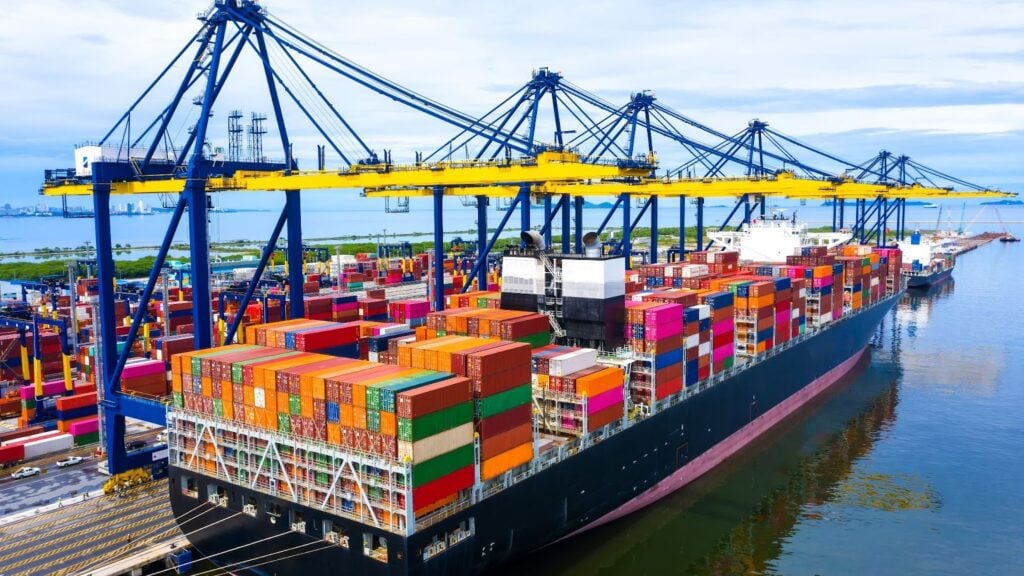Received for Shipment: Definition, How It Works, and Importance

Understanding the concept of ‘Received for Shipment’ is important in the shipping industry. This notation indicates that the carrier has received the cargo at the port facility for loading onto a specific vessel or voyage.
In this article, we will look into the definition, how it works, and the importance of this significant notation on a bill of lading. By understanding the ins and outs of Received for Shipment in the supply chain and bulk cargo, you will gain valuable insights into the intricacies of international shipping and its impact on your business.
RFS Document Defined
The Received for Shipment (RFS) document in ocean shipping indicates that a carrier has received the cargo at the port but still needs to load it onto a vessel. It’s a pre-printed bill of lading, formalizing other packages’ receipts before loading, and is crucial in transactions involving Letters of Credit.
The RFS document confirms receipt but doesn’t guarantee shipment loading, making it different from an onboard bill of lading. This distinction is vital for freight logistics and payment processes in international trade.
How An RFS Shipment Works

In an RFS shipment, in this shipment status, the shipping line issues a bill of lading indicating cargo receipt at the port, yet to load onto a vessel. This facilitates tracking and confirms receipt for buyers and banks, especially in LC transactions. However, it doesn’t guarantee subsequent loading onto the ship.
RFS and Bill Of Lading Status
When cargo is confirmed as loaded and shipped, the RFS notification changes to an onboard bill of lading, typically showing a shipped-on-board date. This transition is crucial for banks and financial institutions involved in Letter of Credit transactions, as it provides the necessary assurance about the shipment of goods.
Details On A Received For Shipment
The document issued includes the carrier’s acknowledgment of cargo receipt, detailed cargo description and quantity, terms and conditions of the bill of lading, and relevant information for customs and tracking.
It often accompanies a packing list commercial invoice and the certificate of origin, which are essential for customs clearance and shipment management.
RFS Bill Of Lading Vs. On Board Bill Of Lading
In international shipping, the dynamic between the Received for Shipment (RFS) Bill of Lading and the On Board (SOB) Bill of Lading is vital for efficient cargo management and adherence to trade finance protocols.
RFS Bill of Lading
This document is issued initially when the carrier receives the cargo at the port. It serves as a preliminary acknowledgment of cargo receipt without confirming its loading onto the vessel. The RFS Bill of Lading is crucial in the initial documentation, facilitating planning and logistical arrangements for the upcoming shipping process.
SOB Bill of Lading
Following the RFS Bill, the SOB Bill of Lading comes into play once the cargo is loaded onto the named vessel. This document confirms the loading of the shipment, thereby advancing the cargo’s status in the shipping cycle.
Entities Involved
The interplay between these two bills of lading ensures a transparent and systematic progression of the cargo shipment. It involves multiple stakeholders, including shipping carriers, shippers, consignees, and financial institutions like banks.
Each entity relies on the accurate and timely issuance of these documents to track the shipment’s journey and fulfill various contractual and financial obligations.
Trade Finance Compliance
The transition from RFS to SOB Bill of Lading is a procedural and compliance step. It aligns with international trade finance requirements, providing necessary assurances to involved parties, particularly in transactions involving Letters of Credit.
Importance for Stakeholders
These documents provide crucial information about the cargo’s status and location for shippers and consignees, aiding in logistics planning and management. Banks and financial institutions offer assurance about the cargo’s journey, mitigating risks associated with international trade financing.
Global Shipping Operations
RFS and SOB Bills of Lading are standard practices in global shipping operations, ensuring that cargo movements are documented and managed effectively from the point of receipt at the port to the final loading onto the vessel.
Moreover, the RFS and SOB Bills of Lading work in unison to ensure a smooth cargo transition through various stages of international shipping, maintaining transparency, compliance, and assurance for all involved parties.
FAQs
Here are some common FAQs about the received for shipment.
What Does Received For Shipment Mean?
Received for shipment is a notation on a bill of lading that indicates the carrier has received the cargo at the port for loading onto a specific vessel or voyage.
What Is Received For Shipment Bill Of Lading?
A shipment bill of lading receipt acknowledges the cargo receipt by the carrier at the port facility for loading onto a specific vessel or voyage. It indicates the cargo has been accepted but has yet to be loaded on the vessel.
What Is The Difference Between SOB And RFS?
The difference between them is RFS indicates that the cargo has been accepted by the carrier at the port for loading, but it doesn’t guarantee that the shipment has been loaded on the vessel. Conversely, SOB confirms that the shipment has been loaded and shipped on a vessel.
Summary Of Received For Shipment
In conclusion, understanding the concept of ‘Received for Shipment’ is important in the shipping industry. This notation indicates that the carrier has received the cargo at the port facility for loading onto a specific vessel or voyage.
It’s important to note that “Received for Shipment” doesn’t mean the cargo has been shipped on board yet. This notation and other notations like “Shipped on Board” and “Clean on Board” help satisfy the buyer or banks that the cargo has been received or delivered.
Visit inbound logistics to research warehouses, factories, and catch up on important logistics insights.
